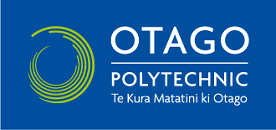
Financing a business start-up
Develop a financial plan for a start-up business.
What’s it about?
In this micro-course, you will prepare a financial report identifying and outlining the financial aspects of a business startup which indicates the likelihood of a successful venture, including interpretation of financial statements, and the effects of cashflow.
What will I learn?
Upon successful completion of this course, you will be able to:
- Review principles of economics and how they relate to small businesses
- Explain why start-ups require finance
- Identify financing options for new venture start-ups in their own country and describe the differences between them
- Construct basic financial statements (projected) for start-up business
- Examine the effects and significance of cash flow for a business start-up
- Recommend strategies to maximise future investment potential of a business start-up
What’s involved?
There are four learning pathways, each containing numerous resources and activities. The learning pathways are:
- Principles of economics for small businesses
- Financing a new start-up
- Understanding financial statements
- Valuing a new start-up
This micro-course forms part of the larger Introduction to Entrepreneurship course of study coupled with IENT101 and IENT102. On completion of the three associated micro-courses, if learners wish, they can be assessed for academic credit.
Prerequisites?
Anyone is free to participate in this course. An internet connection and basic web-browsing skills are recommended, with the ability to create a blog and use online communications tools (instructions and self-study tutorials provided.) You are requested to keep a personal learning journal, as reflection has been shown to markedly increase learning.
The course and assessments are conducted in English. This is a university level course and you should be able to communicate fluently and accurately in spoken and written English.
Image credit: Time and investment, by Tumisu, dedicated to the public domain.
 Carol Cooper-Taylor, is an independent consultant with extensive experience in e-learning design. Carol was commissioned by the OER Foundation to lead the design and development
Read More
Carol Cooper-Taylor, is an independent consultant with extensive experience in e-learning design. Carol was commissioned by the OER Foundation to lead the design and development
Read More
 Dr Wayne Mackintosh, is the founding director of the OER Foundation and is the designated UNESCO and ICDE Chair in OER at Otago Polytechnic. He is
Read More
Dr Wayne Mackintosh, is the founding director of the OER Foundation and is the designated UNESCO and ICDE Chair in OER at Otago Polytechnic. He is
Read More
 Claire Goode, is a member of the Learning and Teaching Development team at Otago Polytechnic, and a Senior Fellow of the UK's Higher Education Academy.
Read More
Claire Goode, is a member of the Learning and Teaching Development team at Otago Polytechnic, and a Senior Fellow of the UK's Higher Education Academy.
Read More
 Simonne Wood, is an Educational Technology Specialist within Otago Polytechnic's Learning and Teaching Development Team. She has many years' experience in tertiary institutions in the
Read More
Simonne Wood, is an Educational Technology Specialist within Otago Polytechnic's Learning and Teaching Development Team. She has many years' experience in tertiary institutions in the
Read More
The course was assembled from the curriculum outline originally developed by Thomas Edison State University.







